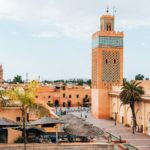Malaga is a city found in the Andalusian province of Spain. After Seville, Malaga is the second largest city in Andalusia. Being one of the oldest cities in the whole of Europe, there is a lot of rich history to discover. The dazzling city boasts of several beaches, lovely atmospheres and an exciting culinary scene.
Get the most out of your upcoming trip with these 19 things to do…
MUST-DO
Alcazaba Fortress of Malaga
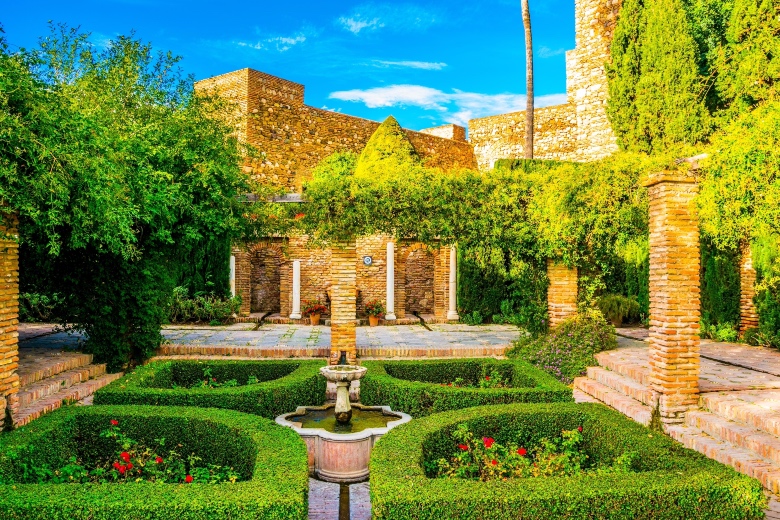
The Alcazaba is the Moorish fortress of Malaga. Built by the Hammudid dynasty in the early 11th century, it sits at the foot of Gibralfaro hill. It is the most important landmark you will find in Malaga, so you certainly will not be disappointed. The building is impressive and features beautiful gardens and fountains. . also, if you take a walk on the fortification of the Alcazaba, you will be greeted with amazing views of the whole city. Make sure you keep this at the top of your list, and go and discover the best-preserved Alcazaba in Spain!
Note: You can book a guided tour to learn more about it – (this includes a tour of the Roman Theatre too)
The Malaga Cathedral
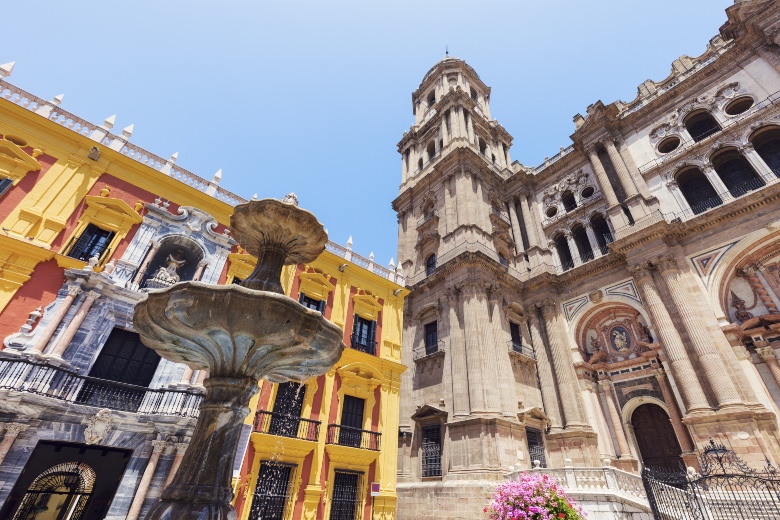
The Cathedral of Malaga is a national as well as religious landmark. La Manquita as it is also known was built between 1528 and 1782. The interior of the cathedral is beautiful being inspired by renaissance and baroque styles. The south tower remains uncompleted as it was when the Cathedral was constructed due to a lack of government funds, hence the name La Manqyuita which is loosely interpreted as “one armed woman”. You can find the Museo Catedralicio (Cathedral Museum) inside the cathedral. It is currently housed where the old Chapter House can be found.
You can explore a roof-top tour and climb two hundred stairs to bask in delightful views.
Picasso Museum
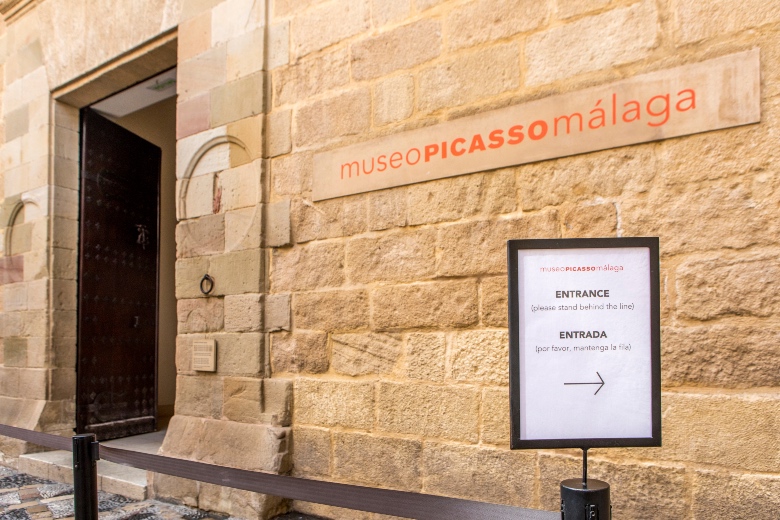
Pablo Picasso is Malagueño, so it is only right that his works are displayed in a whole museum! The Picasso museum opened in 2003 in the Buenavista Palace and is a must see. The museum houses one of the most extensive collections of artworks by Picasso, there are an average of 285 works which have been donated by members of Picasso’s family. Walk through the 12 halls of the exhibition gallery, which includes classic Picasso works such as ‘Olga Kokhlova with Mantilla (Barcelona 1917), Mother and Child (1921-1922). It is the most visited museum in Andalucia and only a two minute walking distance from Malaga Cathedral.
Tip: Queues are extensive and wrap around the narrow pedestrian street, so get there with enough time to spare.
Feria de Agosto
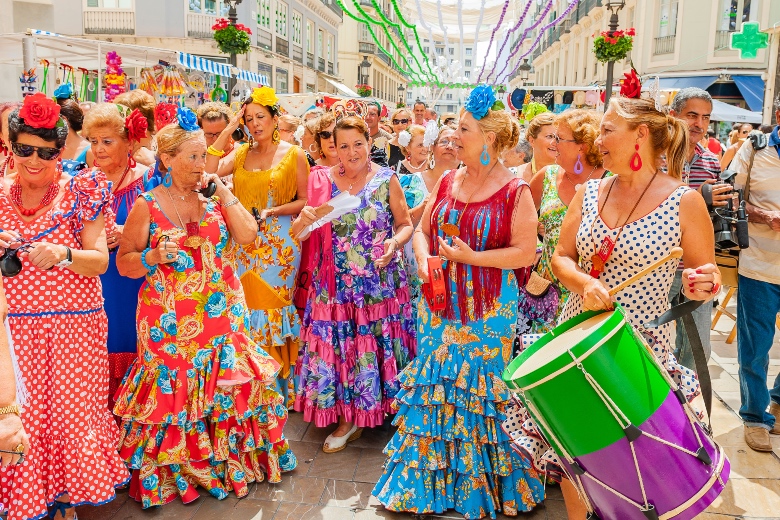
Feria de Agosto, also known as Feria de Málaga is the yearly August Fair held in Malaga. People from all over the world gather in celebration of the re-conquest of the city by Isabella and Ferdinand in 1487. The fair is mostly concentrated around Malaga’s main shopping street – Calle Marques de Larios. There are parades of Andalusian horses, flamenco singing and sevillanas dancing, and even fireworks. Make sure you attend Feria de Agosto to indulge in some tapas and drink some of the best sherry that you will taste in Malaga.
Join the fun and let the dazzling lights guide you to an unforgettable experience!
Caves of Nerja
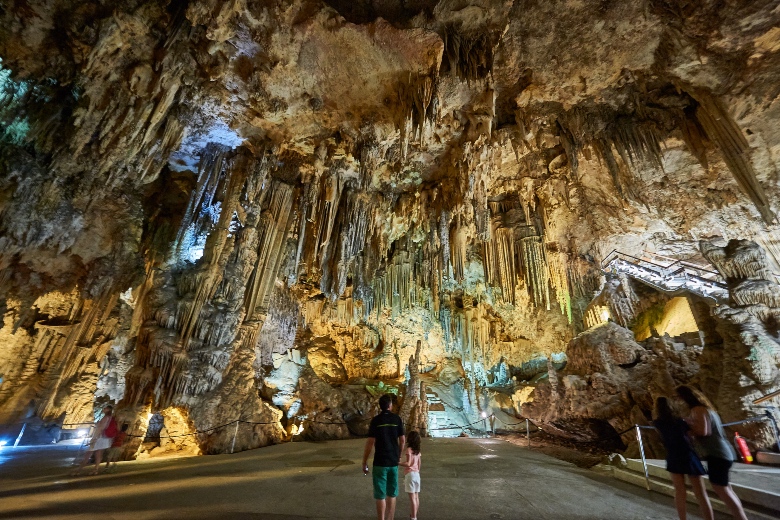
The Caves of Nerja are a chain of huge caves stretching for almost five kilometers. These caves are one of major tourist attractions in Spain. They are perfect for hiking with the various trials to follow, learn about the history of them as you do so. There are also concerts which are regularly held in one of the chambers so ensure you find out if there are any happening.
Hiking through the Chíllar River to the Caves of Nerja is what some tourists choose to do and it’s amazing! Albeit you need some of the most comfortable trainers in your life (as the trek takes 4–6 hours), you will not be disappointed. You will be navigating your way through mostly ankle-deep waters and find yourself at the caves.
To get here, it is about a 50 minute drive from Malaga.
Castillo de Gibralfaro
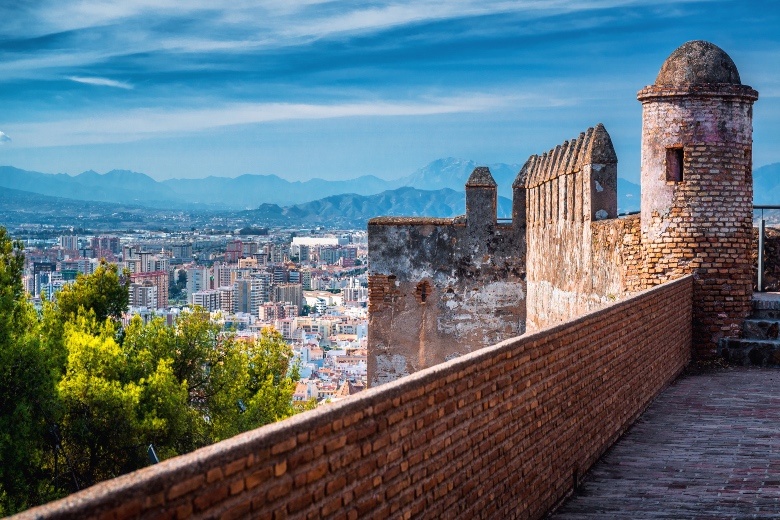
Castillo de Gibralfaro is a magnificent castle which was built in the 14th century. The castle is grand in nature, overlooking the city of Malaga on a hill. The Castle layout is said to be irregularly divided into two parts. The upper part, referred to as the main courtyard, houses the Interpretation Centre, where the history of the castle can be discovered. The lower part is one of the most visible parts of the castle, and holds auxiliary buildings and storerooms.
Get spectacular views of the city and discover more of Malaga’s history at Castillo de Gibralfaro.
OTHER GREAT THINGS TO DO
Flamenco Show
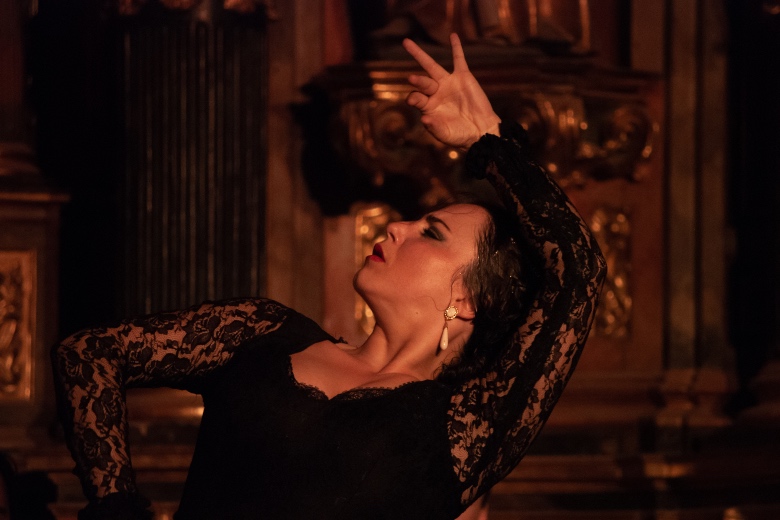
Malaga’s Flamenco scene is not as extensive as Seville’s, but it is still worth experiencing. There are many Flamenco clubs and shows to discover. Flamenco music is the traditional genre of the Andalusian region. Its origins have combined Spanish culture and Gypsy culture. Malaga has a bi-annual Bienal de flamenco. The celebration sees some of the best flamenco artists visiting Malaga.
Note: There are occasional flamenco shows held at The Picasso Museum, so make sure to check beforehand.
Montes de Malaga
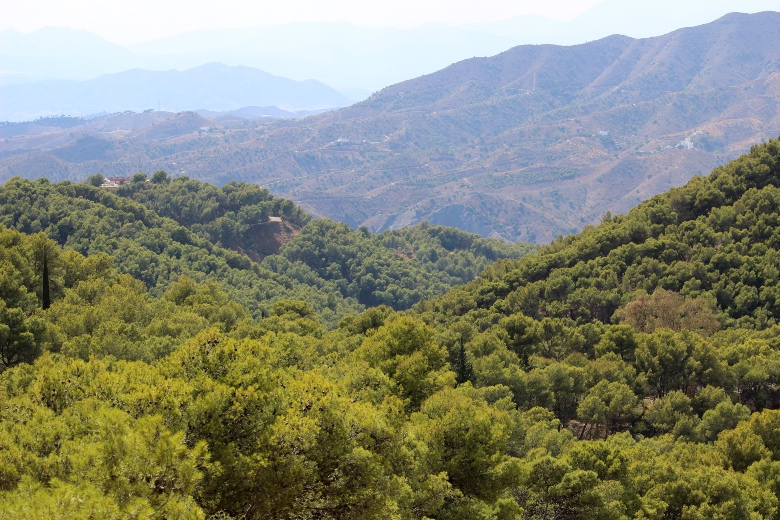
Montes de Malaga Natural Park is just 5km north of Málaga city and spans almost 12,355 acres and reaches heights of 3,383ft. The mountain range was declared a Natural Park in 1989. You can go hiking or cycling on the numerous trails and routes that are available. The River Guadalmedina flows throughout the Montes de Málaga which is rich in vegetation and fauna. There are also archaeological sites located inside the park, such as the Casabermeja rock painting which are worth exploring.
Montes de Malaga is also known as Malaga’s lung due to the abundance of trees allowing you to rest along the trails.
El Teatro Romano
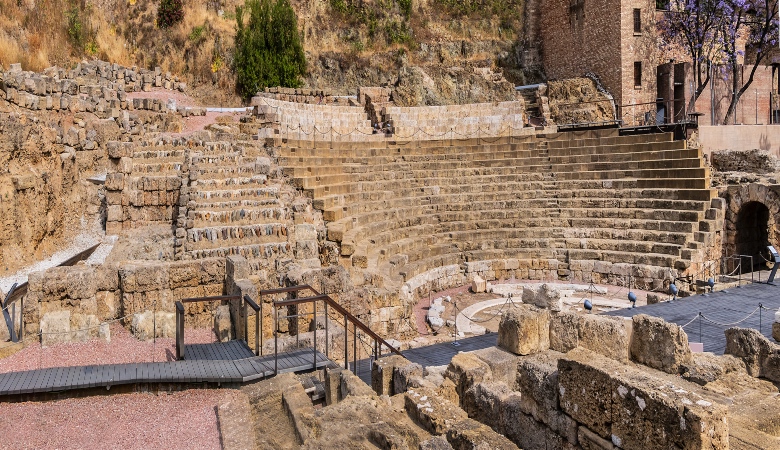
El Teatro is the oldest construction in the city of Málaga, built in the first century AD by Augustus. The theatre itself is one of the remaining indications of Roman Hispania in the city. The theatre remained hidden underground for several centuries and was only rediscovered in 1951. The Roman theatre can be found at the foot of the Alcazaba fortress, so marvel at the ruins during a walking tour of the theatre.
The theatre is still in use today and you can catch an outdoor show too.
Playa de la Malagueta
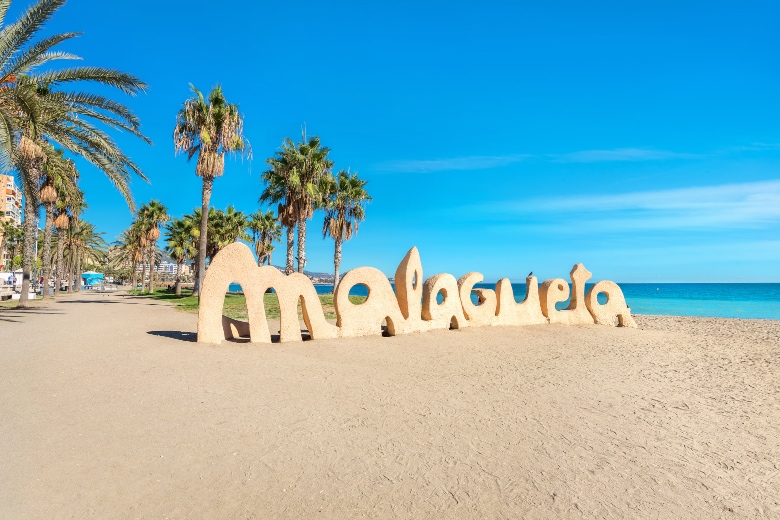
Playa de la Malagueta is Málaga’s most famous urban beach. The Malagueta beach is located next to the port and is the closest one of all of Malaga’s beaches to get to. Once you come off the pebbled entranceway, stick your toes in the golden sand and take a dip in the cool waters. Enjoy the beach, hire a sun-bed and kickback and relax.
At all of the beaches in Malaga you will find Chiringuitos (food stalls), where you can try the local speciality “espetos de sardinas” (grilled sardines).
El Caminito del Rey
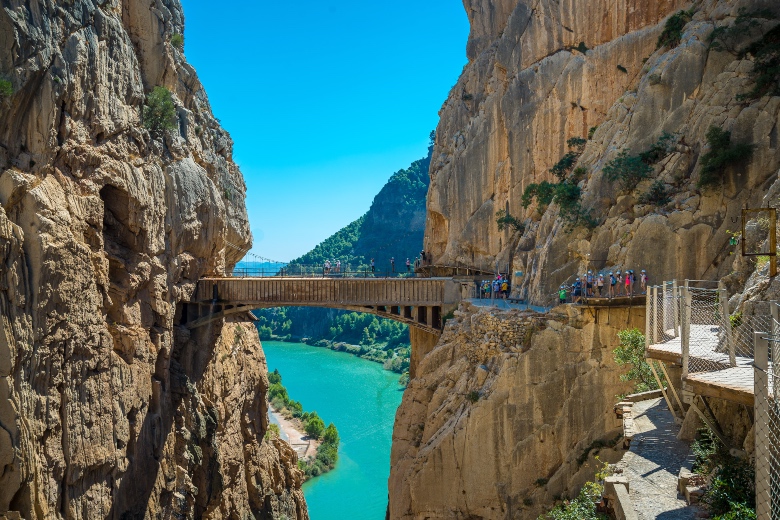
El Caminito del Rey is also known as the King’s Pathway. It was inaugurated by the Spanish King Alfonso XIII in 1921. The walkway is attached along a narrow gorge in El Chorro. It is located in the midst of reservoirs, mountains, gorges and valleys. The King’s pathway was reopened in 2015 after being closed for over a decade, due to accidents suffered by tourists. Desfiladero de los Gaitanes is highlighted as one of the most famous parts of the pathway. Although the boardwalk is riskily constructed, it offers the most picturesque scenery.
Plaza de Toros (La Malagueta)
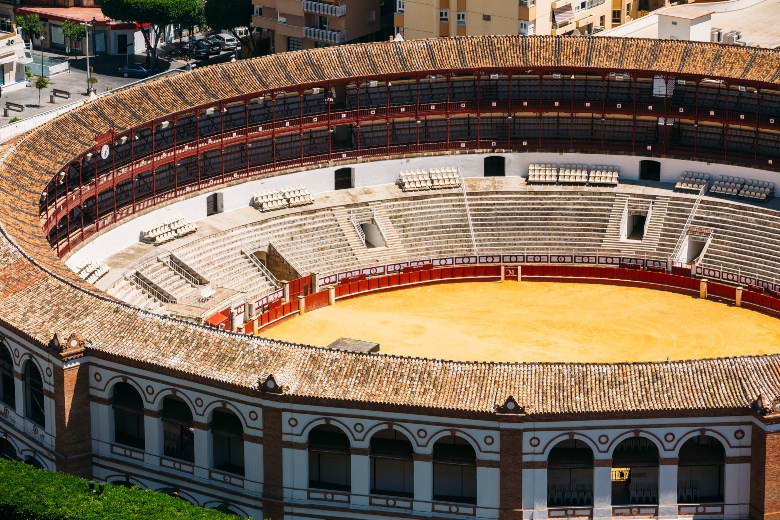
Plaza de Toros, also called La Malagueta is a bullring located in Malaga. The building, like many others, is characterized by Andalusian Arabic architecture. The stadium measures 52m in diameter, and can seat 14,000 people. Plaza de Toros can be found east of Malaga, and is very close to Castillo de Gibralfaro.
La Malagueta has been hosting and celebrating bullfighting events for over 140 years. It hosts several events during the Spanish-style bullfighting season (April to September every year). It is also prominently featured during Semana Santa (Holy week celebration) and Feria de Agosto.
Discover where Picasso Lived
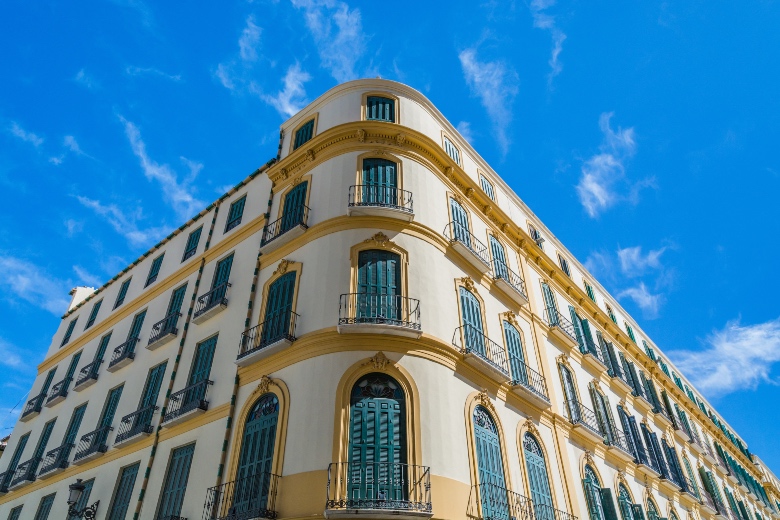
Pablo Picasso’s house is definitely a place to visit on your trip to Malaga. Note that Museo Casa Natal is a house turned into a museum, so it is quite small! . It is situated in the heart of the historic centre of Malaga in Plaza de la Merced. The museum includes some interesting artefacts, works and photos of Picasso and his family. As he and his family moved from the house when he was a child, Museo Casa Natal visualises a replication of what life might have been like in the painting household.
The first floor has many works on show by his father (who was also an artist), Jose Ruiz Blasco.
Port of Malaga
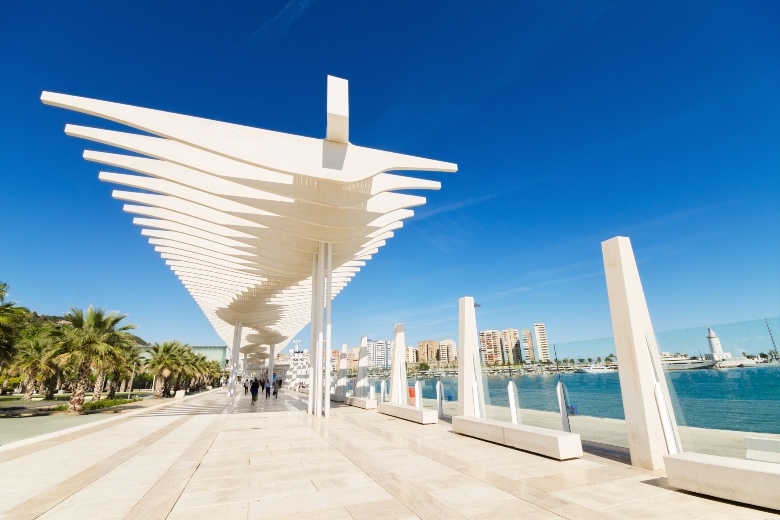
Port of Malaga is a few minutes from the city centre and is a seaport which houses cafés, restaurants, bars and fashion boutiques. It is the oldest operating port in Spain and one of the oldest in the whole of the Mediterranean. The port has more than 1,300 linear meters of exclusive docking for cruise ships. Although the port is one of the oldest, the recent renovations have given it a distinctively modern feel.
From time to time, there are concerts or Music festivals which take place at the port. Spend a relaxing afternoon here taking in the astonishing views, with a cocktail in your hand.
Pompidou Centre
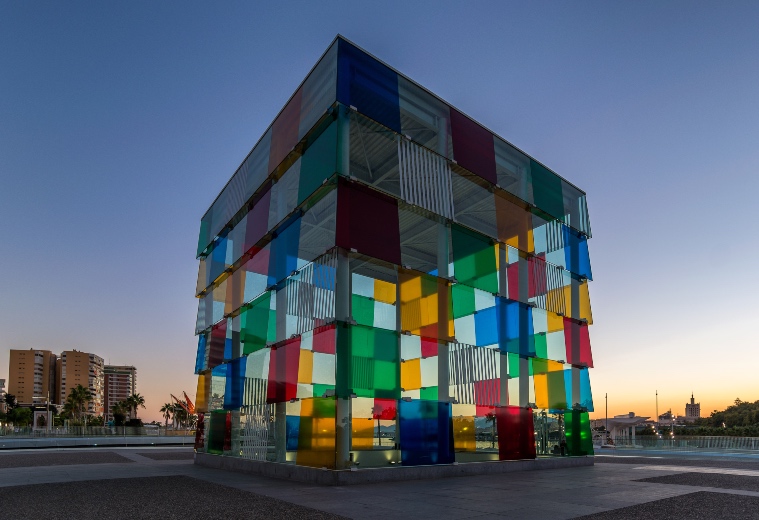
The Pompidou Centre is another one of Malaga’s museums. The museum houses a fantastic array of modern art work and is topped with a striking multicoloured glass cube. Alongside the permanent exhibitions which include over 80 works by major artists such as Picasso, Miró, Bacon, Magritte, Frida Khalo, there are also a lot of temporary exhibitions which are also showcased. Located in the heart of the city’s port area, it’s so close to many other important landmarks.
The museum’s fantastic exhibits are suitable for all ages. They feature a range of paintings, installations, films, and sculptures.
Iglesia del Sagrado Corazón
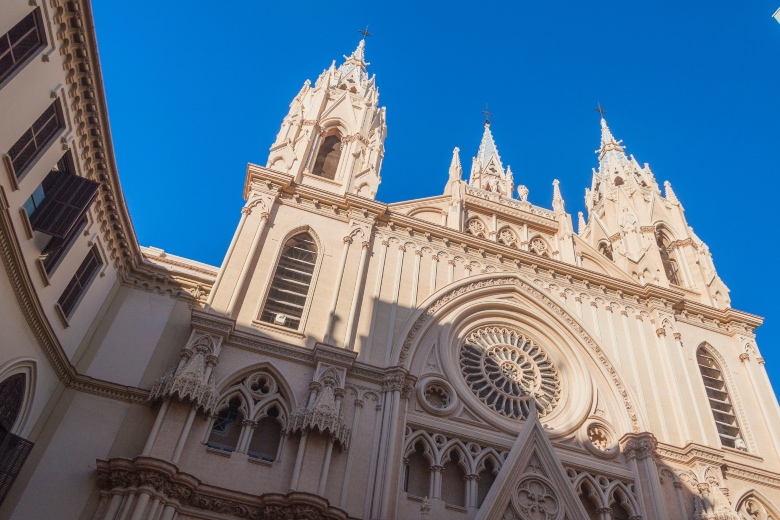
Iglesia del Sagrado Corazón is located in Plaza de San Ignacio de Loyola. The church was built in 1920 by Architect Fernando Guerrero Strachan. The basilica plan is divided into three naves and is covered with a ribbed vault. Marvel at the intricate archway entrance and stained-glass windows. Views are even more exceptional at night when the whole building is floodlit. Whether you plan to go during the day or at night, make sure to grab a picture outside.
The Church of the Sacred Heart is also viewed as a hidden gem as it is only a 2-minute walk from the main cathedral, yet is tucked away, and for this reason can be easily missed.
Mirador de Gibralfaro
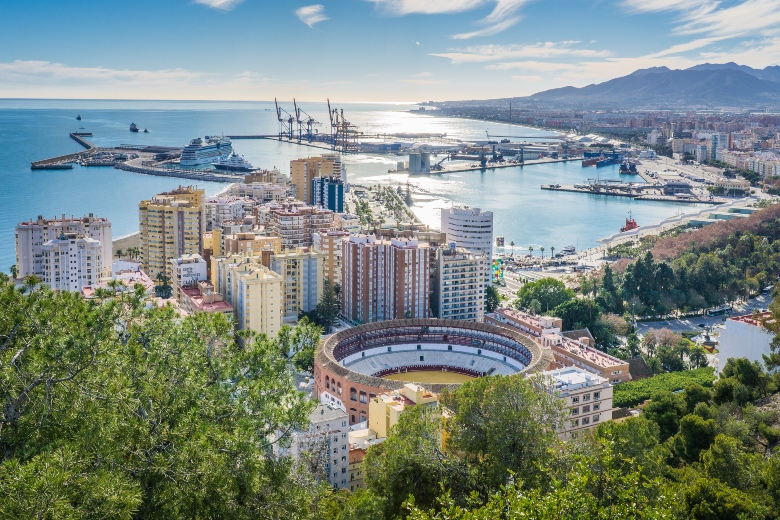
Mirador de Gibralfaro is near Castillo de Gibralfaro, situated northeast of Port of Malaga. It is a hilltop lookout point which offers beautiful panoramic views of the city. It is just stunning and provides truly unrivaled views of places such as Plaza de Toros de la Malagueta and Malags’s Port. Tourists particularly enjoy this spot to watch the sunset too.
Note: You can either hike or drive up to Mirador de Gibralfaro.
Castillo de Gibralfaro

Castillo de Gibralfaro is a magnificent castle which was built in the 14th century. The castle is grand in nature, overlooking the city of Malaga on a hill. The Castle layout is said to be irregularly divided into two parts. The upper part, referred to as the main courtyard, houses the Interpretation Centre, where the history of the castle can be discovered. The lower part is one of the most visible parts of the castle, and holds auxiliary buildings and storerooms.
Get spectacular views of the city and discover more of Malaga’s history at Castillo de Gibralfaro.
La Concepcion Botanical Garden
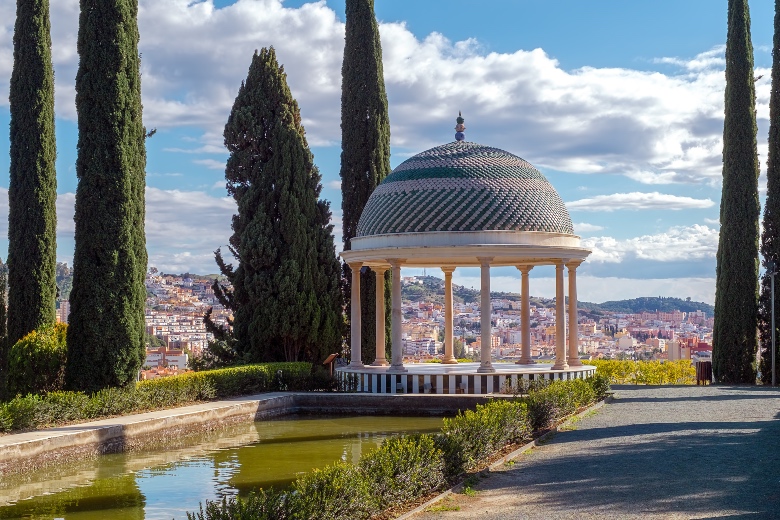
La Concepcion Botanical Garden is located in the Northern part of the city of Malaga. It is one of the largest open-air collection gardens of tropical and subtropical flora in Spain, spread out over 25,000 square meters. There are 2000 different species of trees and plant varieties from Europe, America, Asia, Africa and Oceania. Walk through La Concepcion Botanical Garden and gain a bigger appreciation of nature. There is also a mini buffet for food, so if you do get tired of walking, you can sit and rest there.
Note: You can book a guided tour and learn more about the range of species of trees and plants.


